How to Start a Gluten-Free Sourdough Starter
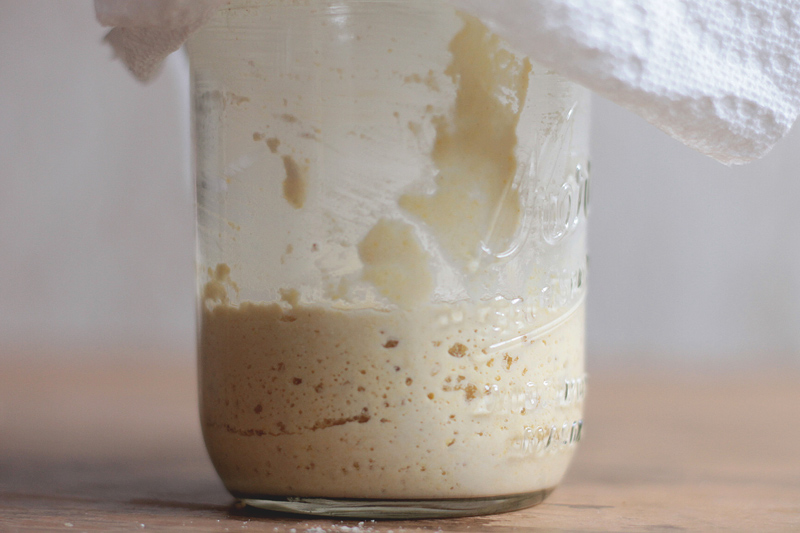
Fermented foods can be as simple or as complicated as you make them. From fully wild-fermented vegetables and beverages to truly cultured (as in adding a specific strain of bacteria or yeast) dairy products and breads, you can do it all at home with simple ingredients or splurge on those culture starters you want to work with.
Sourdough is no exception. I’ve worked with probably about a half-dozen sourdough starters made from culture starters over the years. From various forms of wheat starter to rye and gluten-free, they are all a bit different. But if you are like me, you want to know how to do these things yourself, for free.
I’ve been working with gluten-free sourdough recently so I thought I’d take you along in the creation of a gluten-free starter as it comes alive, along with a few considerations specifically pertaining to gluten-free sourdough starters.
Days 1-3
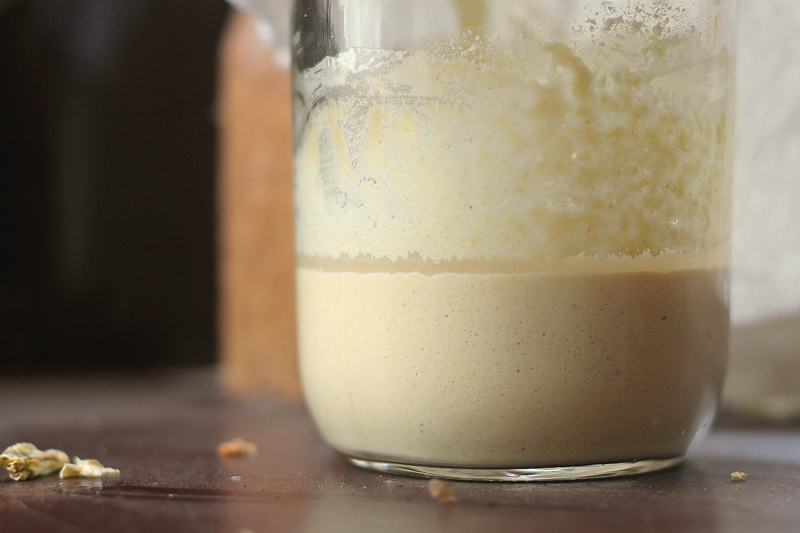
No matter what type of flour you are working with, all starters can begin with two simple ingredients: flour and water. For the sourdough starter I am currently working with, I began with millet flour.
For the first few days you simply mix 1/4 cup of the flour with 3 Tablespoons water. Blend vigorously to bring some air into the mixture and then place a breathable lid over the mixture (paper towels or coffee filters work well). Feed the starter the same 1/4 cup flour and 3 Tablespoons water twice per day until your jar is about half full.
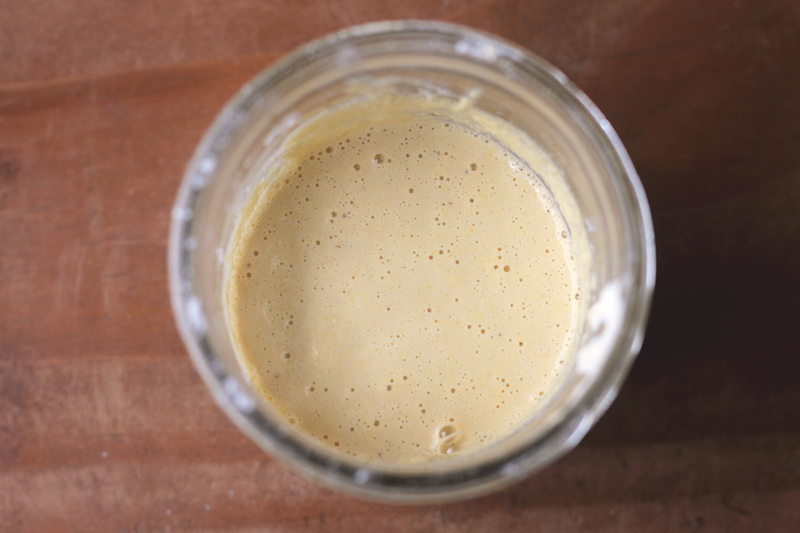
During those first few days, you won’t see much more than a slurry of water and flour. What you can’t see are the tiny microbes beginning to take hold, multiplying with each addition of flour and every passing hour of time you allow it to ferment.
A Note on Flours:
I have used everything from brown rice to buckwheat flour and many in-betweens to make or feed a gluten-free sourdough starter. I prefer sorghum, teff, and buckwheat but we had millet on hand so that is what I used this time around. I personally find rice flours too starchy for a good starter because all of that starch leads to a doubling in volume of the dough very fast which also means the starter must be fed 2-3 times per day for it to not overproduce alcohol and underproduction yeast.
Days 4-6
This is when you really start to see your starter come to life. Small bubbles lead to larger bubbles and soon the whole thing is puffed up. When you scoop it out with a spoon, you notice it is a lot like a chocolate mousse, light and airy. It should be doubling in volume in 4-8 hours and it should smell pleasant, like sourdough bread.
One thing about millet flour is that it has a bit of funkiness to it when fermented. It reminds me of a stinky blue cheese in some ways and that can really come through if a sourdough recipe contains a lot of millet flour. The amount in the starter doesn’t seem to impact the overall flavor, however.

Even though you notice it is bubbling and active after 4-5 days, I like to give it two more days feeds before using to make sure the yeasts are really active. So continue your twice-per-day feedings, discarding a bit as needed, so that you start with about 1/2 cup starter when you go to add your flour and water.
By day six or seven, it should be ready to use as leavening.
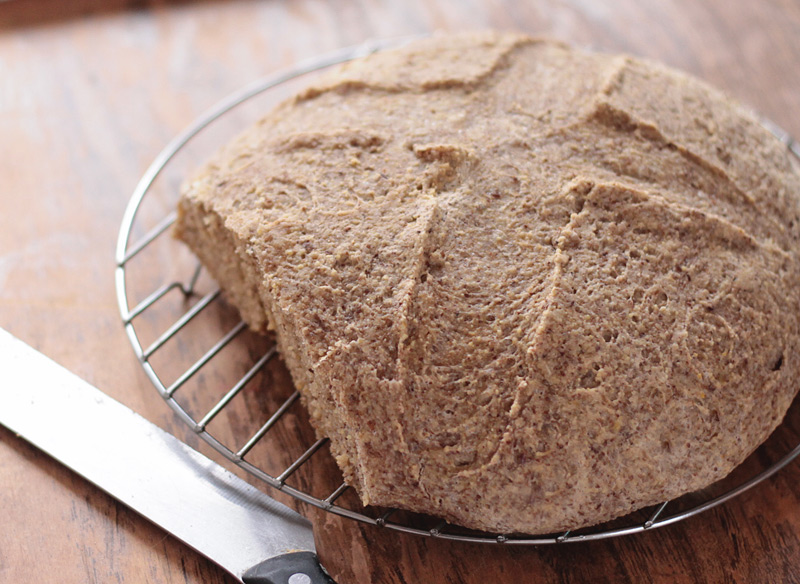
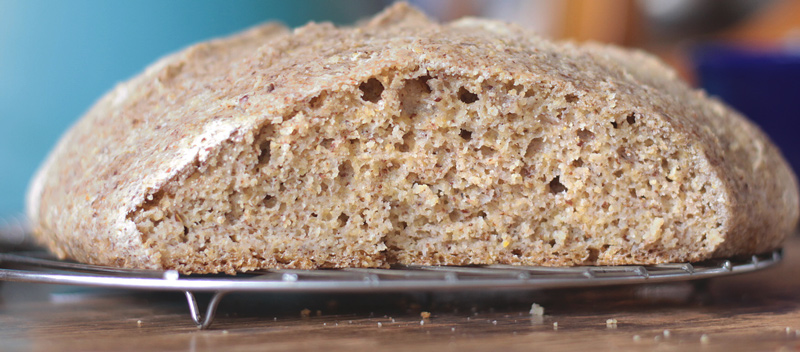
And then it’s time to get baking! I hope to share this Gum-Free, Gluten-Free Sourdough Boule with you soon but you can also find some of my favorite gluten-free sourdough recipes in Traditionally Fermented Foods.
Gluten-Free Sourdough Maintenance
Up until this point, working with gluten-free sourdough looks a lot like working with wheat sourdough. Maintaining your gluten-free sourdough starter, however, takes just a bit more maintenance.
For one, I find that feeding it twice per day results in a better starter. Secondly, if you are going to refrigerate your starter for days at a time, it’s a good idea to take it out and begin feeding it 24 hours ahead of time. That way you can get 2-3 feeds in to create a vigorous, active starter before you are ready to bake.
Finally, feel free to switch up the flours you use to bake. As stated above, I have used teff, buckwheat, millet, sorghum, and oat with good results. Each of these grains provides a different amount of starch to the starter, but in my experience that difference isn’t substantial enough to create a problem.
Have you worked with gluten-free sourdough?
20% off your entire order with a purchase of the Green Power Flavor Kit
Code: GOGREEN


Thanks for the advice! I have your cookbook and make the recipe for gluten -free sourdough english muffins regularly (it’s my go-to bread for everything from toast to mini pizzas to sandwiches) and my starter is brown rice flour. You’re right, I do have to feed it several times a day. I’ll try a different flour!